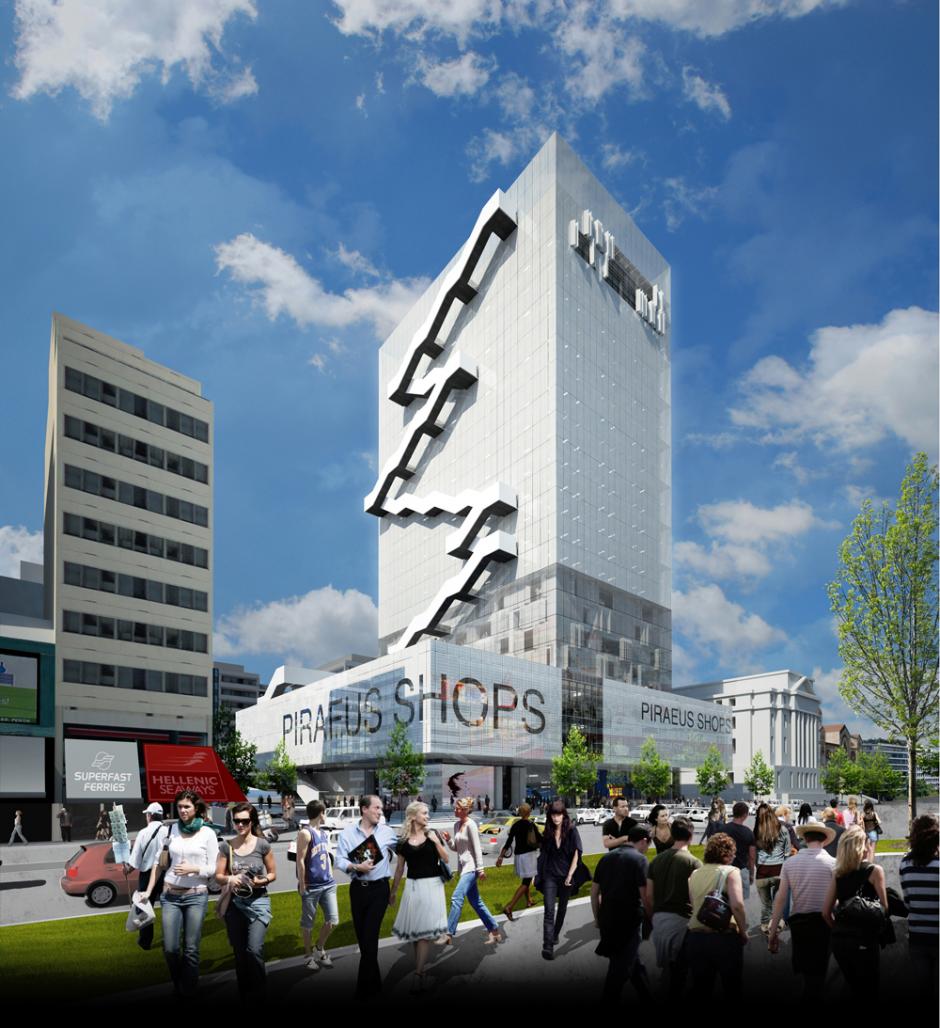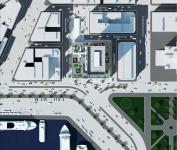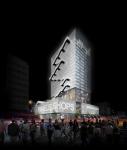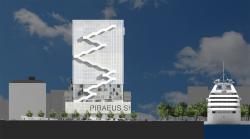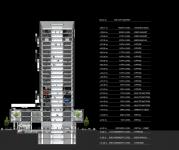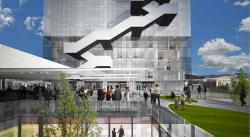At first glance, Piraeus Tower, with it’s dominant scale within the urban fabric, feels like an unwanted visitor, ironically, one that over time, has become disconnected to the city through neglect, yet synonomous with the city’s image. Piraeus is composed of 2 major components, those which remain static over time and those affected by an hourly schedule, land vs sea, floating visitor vs the physical city. In fact, these out of scale vistors are in a way the true residents of the city, they are the focus of the city’s energy and economic and cultural life. In this way, perhaps piraeus tower represents the urban rule, not the exception. This idea is significant both in relation to the scale of the tower, but also the mixed-use program housed within. The stacked program represented within the port’s floating residents is derivative of the mixed-use tower, housing offices, cultural facilities, leisure amenities, restaurants, retail and services. We believe that piraeus tower is the essential component within the city, and is symbolic of it’s vitality and future.
Our proposal demands that we express, even magnify the scale and abstract quality of the existing tower. By highlighting the primary massing of tower and podium, we provide a legible canvas for the development of a series of layered readings at smaller scales. Our proposed façade design is derived primarily from the manipulation of a single surface. The application of a fixed exterior screen, or veil for the office floors, set outboard of the curtainwall, provides the most effective shading for the typical workspace and permits the use of a relatively transparent and operable interior layer. As the the program transitions to less restrictive use within the cultural program floors, the screenwall moves to the interior in the form of operable bi-fold panels. The curtainwall then moves to the exterior to provide a transparent venue for viewing the cultural activities within and affect a active dialogue with the city.
The required addition of an exterior stair, not in the form of a traditional switch-back stair, but conceieved more as a ships-ladder, that dynamically zig-zags across the façade, makes a clear reference to the sea; however, the introduction of this highly sculptural element, clipped on to the building’s western façade is deeply routed in the contextual history of the area. The meandering historical pathway up the western slope of the acropolis directly to the east of the tower is the subtext for reading the rythmic movements in the facade.
MATERIAL USE
Corian is the primary material we have utilized to develop a response to the architectural challenges posed by the recladding of the tower. Corian is a unique material, it is produced and engineered in sheet form for use in panelling where jointing is desired; however, the panelling can also be joined together to create large seamless surfaces and monolithic volumes. This inherent duality and abstract quality of finish, makes corian a expressive cladding material well-suited to our proposal. Our design suggests the introduction of a screen layer whose relative position in a “double skin” façade is determined based on performance, and use. In principle, it relies on the varied application of this single product.
The proposed exterior screenwall extending from roof level down to the 8th floor is composed of perforated 19mm corian sheets. These point-supported panels span floor-to-floor, and are held away from the tower on a steel strut system cantilevered from the tower’s structure. The specific perforation level and pattern is determined by balancing optimal shading requirements and the level of visibility suggested by the tower’s privelidged views. By employing a perforation density uniformily across the screen, the effect on the view is minimal, yet the uniform shading provided by the fixed corian screen significantly reduces solar gain, glare and energy use, effectively reducing the load on mechanical cooling systems. The interior layer is comprised of a high-performance curtainwall with operable units, utilizing advanced low-e coatings to achieve thermal and solar performance with maximum visible daylight transmittance. This permits the use of clear(low-iron), un-tinted glass, for the façade and significantly increases the quality of the work environment.
As the program transitions from general office use to multi-function cultural space at the 8th floor, the Corian layer shifts in to become the interior layer. It is transformed from a fixed panel system, to a bi-fold operable shutter system. This interior shutter system permits for the localized adjustment of the interior based on the particular use, light conditions and the level of visibility desired. The glass curtainwall layer moves to the exterior and utilizes Dupont low-iron Sentryglass w/structural inter-layer to achieve a minimally supported transparent exterior facade. The relative transparency of the exterior glass layer reveals an ever changing interior facade composed of shutters both open and closed. The facade comes to life particularly at night when the interior lights up to invite the public to view the activities within.
2010
2010
Client: GreekArchitects.gr, Dupont Hellas S.A.
Facility: Mix-use Tower Redevelopment
Location: Athens, Greece
Size: 32,224 sm
Status: International Competition Proposal- Stage 1, 2010
Design Architect: ZERAFA ARCHITECTURE STUDIO
Design Team: Jason Zerafa, Joaquin Boldrini
Associate Architect: Gregory T Waugh AIA
